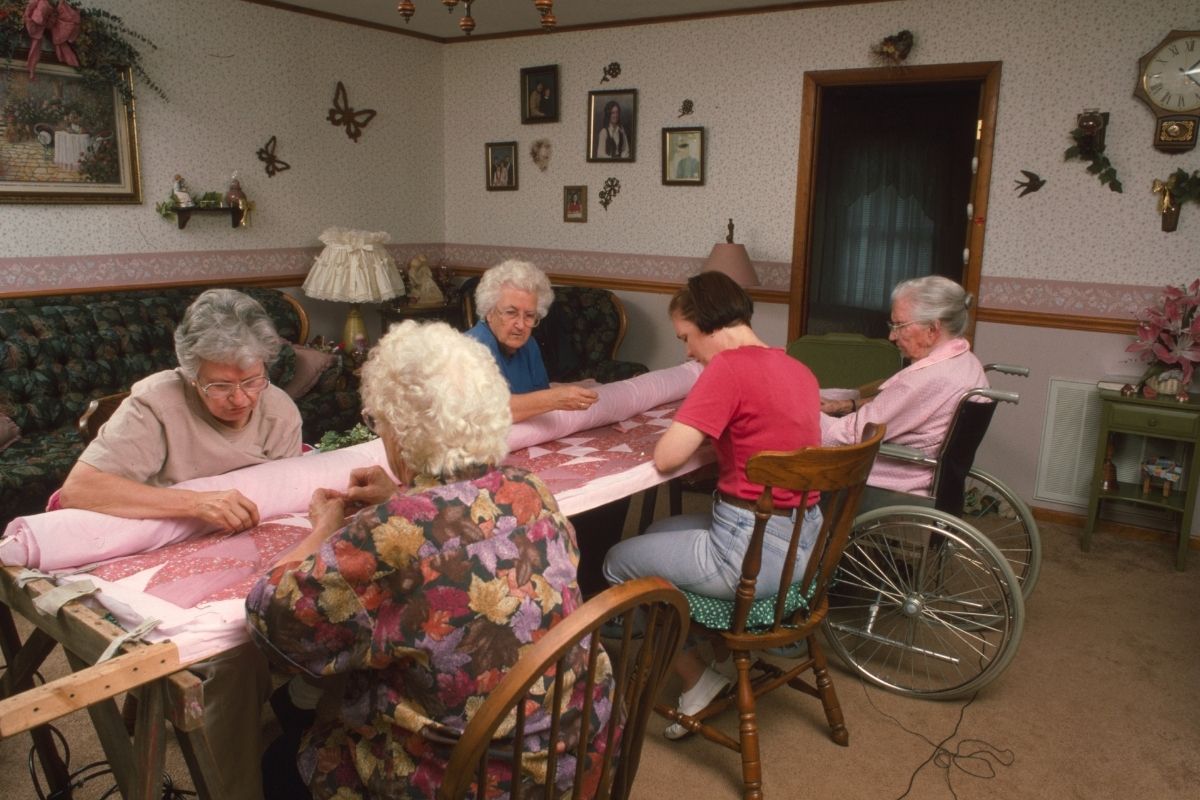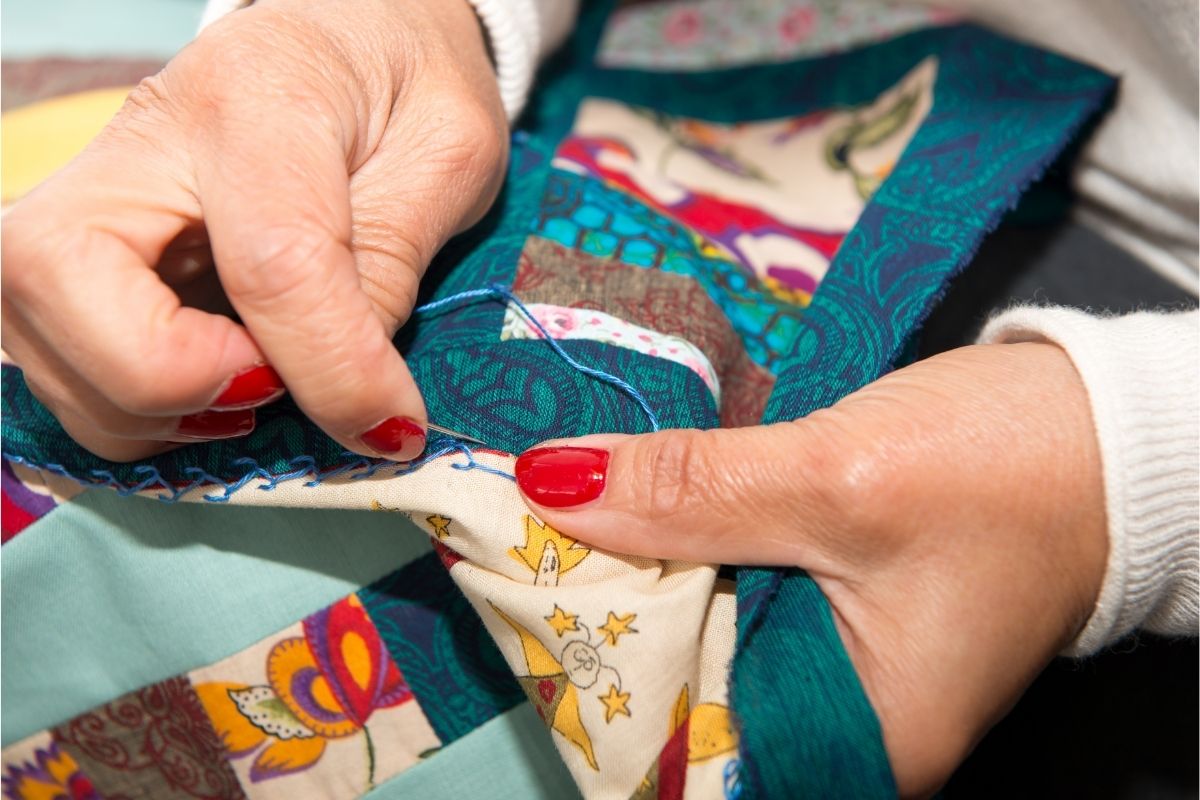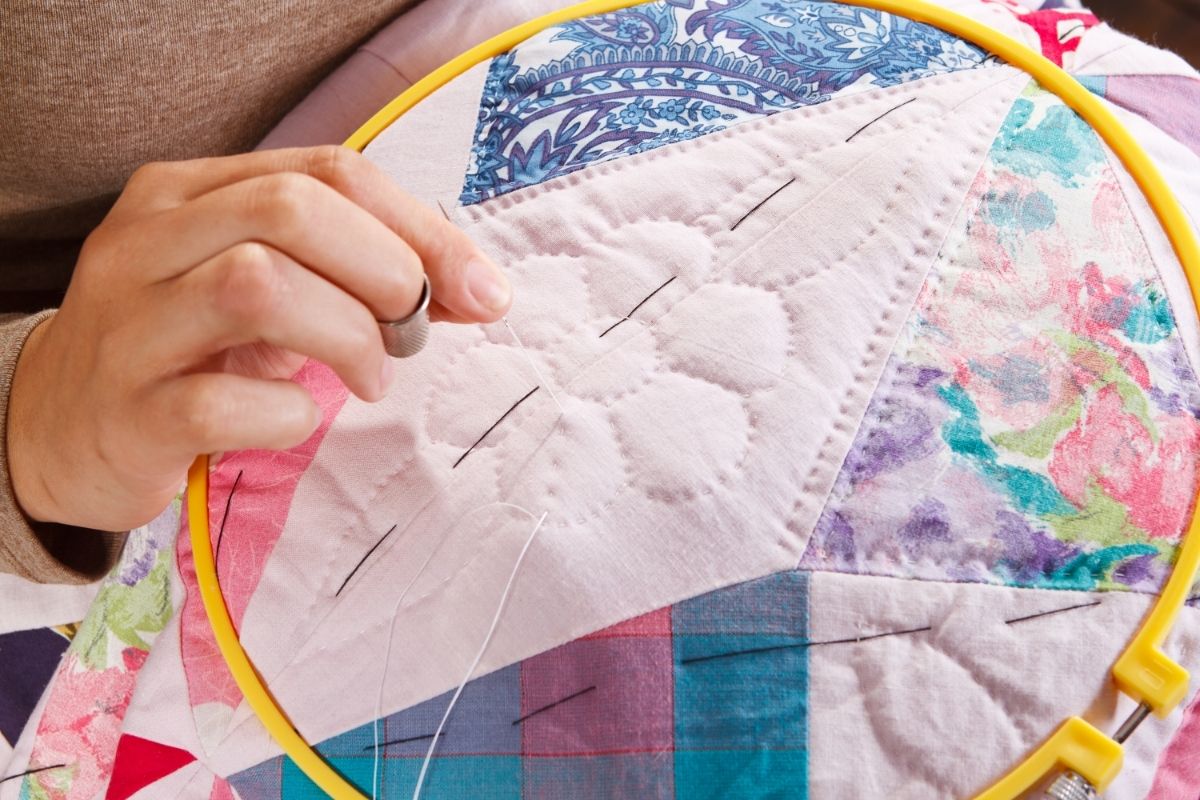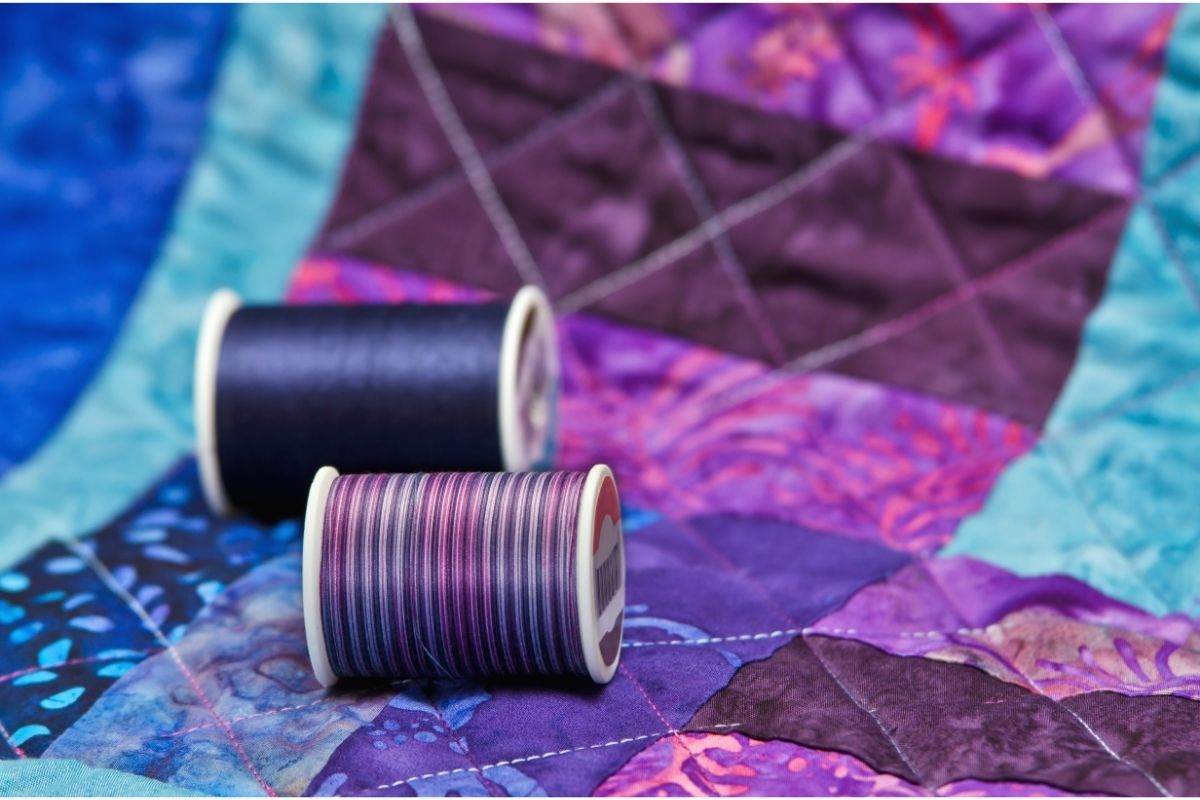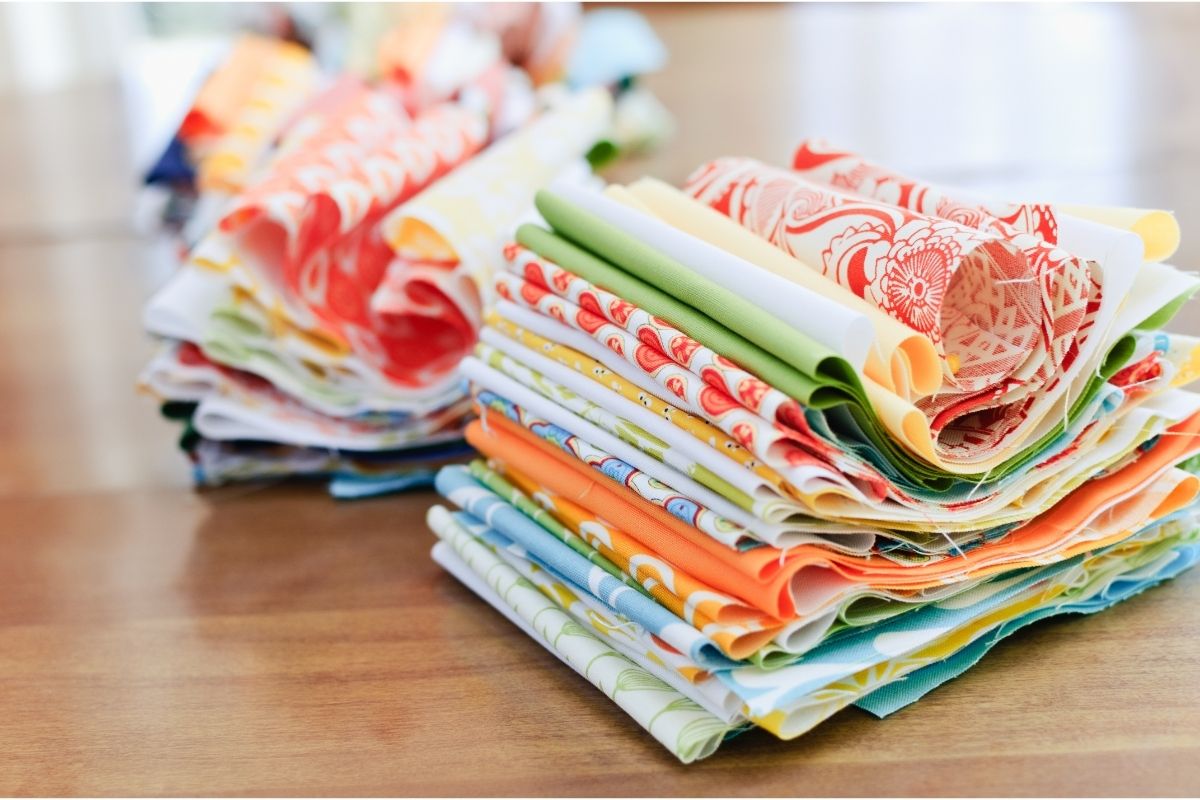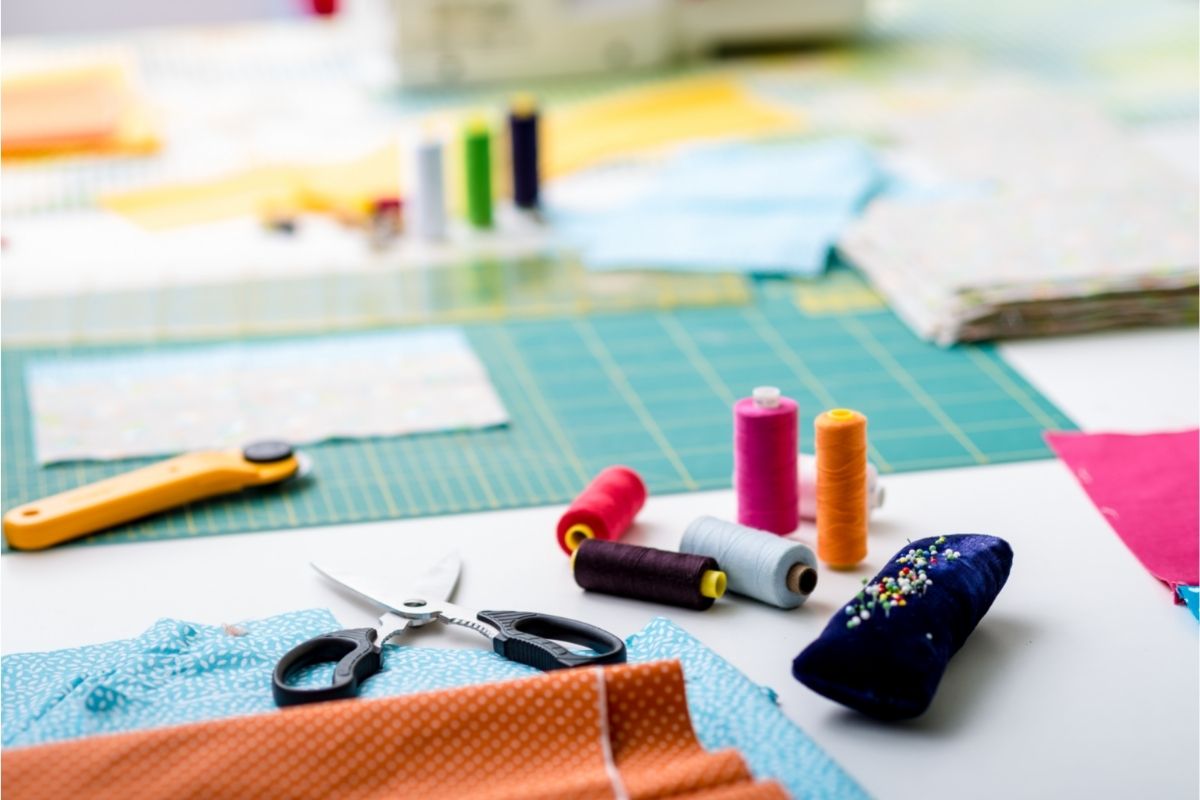Quilting is a craft that has been around for centuries. The technique involves using thread or yarn to stitch together fabric pieces to create beautiful designs.
Quilts are usually sewn from multiple layers of fabric, each layer being stitched to the next.
There are various different terms related to quilting, and it can be a little difficult to know them all if you are new to this craft.

One of these terms is batting, which experienced quilters will tell you is an essential part of any quilt project. But what exactly is batting and is it an absolute necessity in quilting? And how does it work in your projects?
This article will explain what batting is, how it works, and why you need some in your sewing projects. We’ll also share four alternative methods you can use to make your own quilts without batting.
What Is Batting?
Batting is a type of material used in quilting. It provides stability and support to your finished quilt.
When you sew two fabrics together, they have to be held together by something else.
If you don’t add anything between the fabrics, then they would just fall apart when you start stitching. That’s where batting comes into play.
Batting is made up of small fibers that keep the top and bottom layers of fabric stuck together while you sew. They provide the same kind of support as foam padding on a mattress.
There are several types of batting available: cotton, polyester, wool, silk, bamboo, and more. Each one offers its own benefits and drawbacks.
For example, cotton batting tends to be cheaper than other options but may shrink over time.
Wool batting is expensive but very durable. Silk batting is softer than cotton and polyester. Bamboo is considered eco-friendly and biodegradable.
There are many ways to use batting in your projects. Some people like to cut their own batts out of old sweaters or blankets. Others prefer to buy pre-cut batts at fabric stores.
Whatever method you choose, there are pros and cons to each option. There are also alternatives to batting altogether, but more on that later!
How Does Batting Work In Your Projects?
When you sew two fabrics together with batting, it creates a sandwich effect.
The batting keeps the layers of fabric firmly attached to each other so that no matter what happens during the process of making a quilt, the layers won’t come undone.
The batting also helps stabilize the edges of your quilt. If the edges were not stabilized, the seams could stretch out over time due to wear and tear.
As the seam stretches, it becomes less stable and eventually tears. By stabilizing the edges of your quilts, you prevent this problem from happening.
The batting also adds loft to your quilt. Loft refers to the amount of space inside the quilt. A higher loft means that there is more room inside the quilt for stuffing, filling, and embellishments.
The batting can also make your quilt extra soft, as it tends to be made up of materials that are made up of tiny fibers, offering a smoothness that doesn’t feel rough against your skin.
You can find batting in a variety of sizes and thicknesses.
The size of the batting determines how much weight it carries in your quilt. Larger batts tend to carry more weight than smaller ones.
Why Do I Need Batting In My Sewing Projects?
If you want to create beautiful quilts, you should know that batting is an important component. Here are five reasons why you might want to consider using batting in your projects:
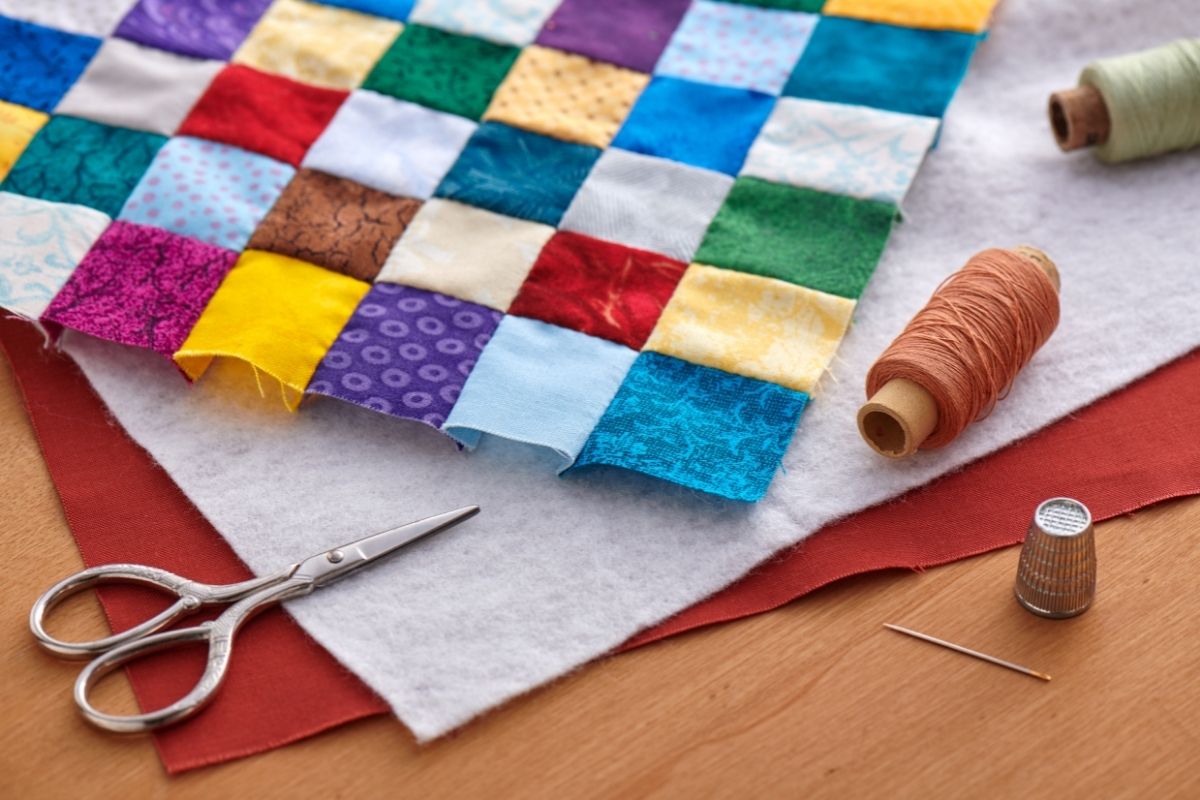
Stabilizes Fabric Edges
One of the biggest problems with sewing is that the edges of the fabric can become loose and ragged after repeated washings. This problem is especially common if you’re using a serger.
Sergers automatically stitch along the edge of the fabric, which prevents the edges from stretching out.
However, if you’re cutting the fabric yourself, the edges will inevitably fray.
To solve this problem, you can either use a rotary cutter or scissors to trim off any excess fabric on the edges. Or, you can add batting between the fabric pieces before stitching them together.
When you do this, the batting acts as a barrier between the fabric pieces and protects them from fraying. It also gives your project a professional finish.
Makes Soft Quilts
Batting provides a layer of insulation between the top and bottom layers of your quilt. This insulating layer helps keep your quilt warm when you sleep under it.
Helps Prevent Fraying
Frayed edges aren’t just unattractive; they can actually damage your quilt.
Over time, frayed edges may cause the threads holding the layers of fabric together to break. Once the thread breaks, the layers of fabric can fall apart.
Adds Weight To Your Quilt
Lofty quilts weigh more than flat ones. This is because they have more volume than flat quilts. Lofty quilts are perfect for adding decorative elements such as flowers, beads, buttons, ribbons, etc.
Keeps Stuff Out Of Your Quilt
When you stuff a quilt, you usually stuff it with polyester fiberfill. Polyester fiberfill is great at keeping things like dust, dirt, hair, lint, and other small particles from getting into your quilt.
But if you don’t stuff your quilt, these small particles can get trapped inside your quilt.
When you stuff your quilt, you also fill its pockets with air. Air has no place to go once it gets inside the pocket. So, if you don’t stuff your quilt, the air stays trapped inside.
This creates pressure inside the quilt, which causes the seams to open up over time. If you don’t want your quilt to lose shape, then you should stuff it with batting.
Is Batting Necessary in Quilting?
As we mentioned, batting is an important component in quilting. However, it isn’t entirely necessary.
Some people prefer not to use batting in their projects. They think that batting makes quilts too heavy and bulky. Others believe that batting adds unnecessary bulk to their projects.
It all depends on what kind of look and what level of thickness you want to achieve in your quilt.
If you’re looking for a lightweight quilt, then you probably won’t need batting.
If you want your quilt to be thick and sturdy, then you’ll definitely need batting. And if you want a very lightweight quilt, then you might consider skipping the batting altogether.
Can You Make A Quilt Without Batting?
You might be wondering whether you can make a quilt without batting. Yes, you can!
There are several ways to sew your quilt without batting, as well as various reasons why you might want to make a quilt without batting.
Let’s take a look at some reasons why you might want to skip the batting.
You Want A Flat Quilt
If you want a flat quilt, then you probably won’t need batting. After all, a flat quilt doesn’t require a loft.
And since loft isn’t needed in a flat quilt, there’s no reason to stuff it with batting. In fact, stuffing a flat quilt with batting makes it heavier than a flat one.
You Want A Lightweight Quilt
Another reason why you might want to avoid batting is if you want a lightweight quilt. When you stuff a quilt with batting, you increase the weight of the quilt.
Since you’ll most likely be carrying the quilt around with you wherever you go, you’ll want something that’s light so that it doesn’t slow you down.
You Don’t Have Enough Fabric
Another reason why you might not want to stuff your quilt with batting is if you don’t have enough fabric.
For example, if you only have scraps left after making another quilt, you might choose to save those scraps for another project rather than wasting them by stuffing them into a quilt.
You Need Extra Room For Decorations
If you want to decorate your quilt with embroidery, appliqué, or other embellishments, then you’ll need extra space.
Stitching something onto a quilt requires lots of room. If you stuff your quilt with batting, you’ll only have enough room for the stitching.
But if you stuff your quilt without batting, you’re free to put whatever decorations you want on your quilt.
You Want To Be Able To Wash It
A lot of people prefer to wash their quilts before using them. However, if you stuff your quilted item with batting, you’ll need to hand-wash it first.
But when you stuff your quilt instead of batting it, you can machine wash it. This means that you can use your washing machine to wash your quilt without having to do any hand-washing.
You Want To Save Money
Stuffing a quilt with batting costs money. Not only does it cost more to buy batting, but it also takes longer to stitch your quilt.
If you don’t want to spend the extra money on batting, then you might consider sewing your quilt without batting.
You Want To Sew Your Quilt Faster
When you stuff your quilt and try to get it ready for the next step, it will take longer to finish. But if you stuff it instead of batting it, then you’ll be able to start sewing right away.
Four Batting Alternatives
If you want to be able to gain some of the benefits that batting has to offer, there are some alternative materials that can be used to the same effect.
Let’s take a look at four of the best alternatives to batting that can be used in quilting.
Foam
Foam is an excellent substitute for batting because it provides similar benefits. Foam is cheaper than batting, which is great if you’re on a tight budget.
Also, foam is easy to cut and sew through. So if you’re looking for a cheap way to make a quilt, you might want to consider foam as a replacement for batting.
Fleece
Fleece is another good option for making a quilt. Fleece is very warm and soft, which makes it perfect for winter projects. It’s also pretty inexpensive.
Plus, fleece is easier to work with than batting. And since it’s so soft, it won’t scratch up your quilt as batting can.
Polyester Fiberfill
This is one of my favorite options for stuffing a quilt. Polyester fiberfill is very soft and fluffy, which makes it ideal for filling out a quilt. It’s very affordable, too.
Plus, polyester fiberfill does not shrink much while drying, which means that it won’t lose its shape once it is stuffed into a quilt.
Those are just four particularly noteworthy alternatives to batting. There are many others, including cotton, wool, silk, satin, and even feathers!
So now that we know what batting is, how it works, how to use it and some alternatives to it, let’s move on to learning how to stuff your quilt without it!
How To Stuff A Quilt Without Batting
Now that you know what batting is, you probably wonder how you can stuff a quilt without it.
The answer is simple: by not stuffing it. That sounds crazy, but hear me out. When you stuff a quilt, you put fabric or other material inside it.

Then, you stitch all of those pieces together to create a quilt. But if you don’t stuff it, you can still stitch everything together.
In fact, you can even add a binding to your quilt. So if you want to save time and money, you should think about stuffing your quilt instead of stitching it.
How To Stitch A Quilt Without Batting
To stitch a quilt without batting, you need to first figure out where you want to place your stitches.
This is important because you don’t have any padding between your quilt top and the backing fabric. So if you don’t plan ahead, your stitches could poke holes in your quilt top.
To avoid this problem, you need to decide where you want to place each piece of your quilt before you begin stitching. Once you’ve decided where you want to place every single piece of your quilt, you can start stitching them together.
The next step is to lay your quilt top down flat on a table or bed.
Then, fold over the edges of the backing fabric, so they meet in the middle. Next, fold the backing fabric over again so that the two layers meet in the center.
Now, you’ll have a nice, clean edge around your quilt top. Finally, pin the backing fabric to the quilt top.
The last step is to stitch all of these pieces together. To do this, you’ll need to pick up your needle and thread. Start at the corner closest to you and go straight across until you reach the opposite corner.
Continue doing this until you get back to the starting point.
Once you’re done, remove your pins and turn your quilt right side out. Your quilt is ready to be used!
Tips For Making A Quilt Without Batting
If you’re interested in learning more about how to make a quilt without batting, here are some tips to help you along the way:
- Choose a pattern that has lots of open space. If you choose a pattern with little space between the blocks, you’ll end up having to fill in the spaces with batting.
- Use a large-eyed needle when sewing through multiple fabrics.
- Sew slowly. Don’t rush yourself. Take your time and pay attention to detail.
- Be sure to keep the seam allowances close to the edge of the fabric. This will prevent puckering.
- Always test your finished product before using it.
- Keep your quilts away from direct heat sources like radiators, fireplaces, and hot water pipes. These things can cause your quilt to shrink.
Final Thoughts
Making a quilt without batting can be challenging, especially if you’re new to quilting. However, if you follow the steps above, you’ll find making a quilt without batting much easier than you thought.
It might take a bit longer than normal, but you’ll definitely enjoy the results once you finish, especially if you are looking for a way to make a lightweight quilt at a lower cost.
We hope this guide has helped you – thanks for reading!
- How to Cut Quilt Pieces - April 25, 2022
- Your Simple Guide To Quilt Sizes - April 25, 2022
- How To Join A Quilt With Diagonal Seam - April 25, 2022

